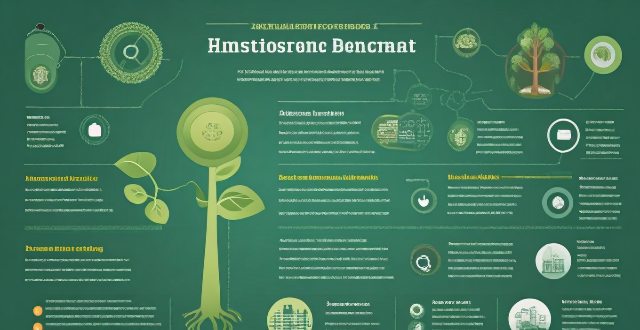Biodiversity is crucial for ecosystem services and human well-being. Integrating it into national development plans ensures sustainable growth. Key strategies include implementing National Biodiversity Strategies and Action Plans, legal protections, sustainable land use planning, economic incentives, education, and research. These measures promote conservation while balancing human needs, fostering a future where biodiversity thrives alongside human prosperity.

Integrating Biodiversity into National Development Plans
Biodiversity, the variety of life on Earth, is crucial for the survival and well-being of all species, including humans. It provides essential ecosystem services like pollination, water purification, and climate regulation. However, rapid urbanization, industrialization, and agricultural expansion have led to significant losses in biodiversity. To mitigate these impacts and ensure sustainable development, it's vital to integrate biodiversity conservation into national development plans. Here's how this can be achieved:
1. Policy Framework
a. National Biodiversity Strategies and Action Plans (NBSAPs)
- Definition: NBSAPs are comprehensive plans that outline specific actions to conserve biodiversity and promote sustainable use of its components.
- Implementation: These strategies should be integrated into national policies and development plans, ensuring that biodiversity considerations are included in decision-making processes across sectors.
b. Legal Protection and Enforcement
- Importance: Strong legal frameworks are necessary to protect biodiversity from threats like habitat destruction and illegal wildlife trade.
- Measures: This includes establishing protected areas, implementing environmental impact assessments, and enforcing penalties for biodiversity-related crimes.
2. Sustainable Land Use Planning
a. Ecosystem-based Land Use Planning
- Objective: To balance human needs with those of the natural environment by considering ecological principles in land use decisions.
- Approaches: This involves mapping ecologically important areas, identifying critical habitats, and integrating this information into urban planning, agriculture, and forestry practices.
b. Green Infrastructure
- Concept: Green infrastructure refers to networks of natural and semi-natural spaces designed to maintain ecosystem services while providing recreational and aesthetic value.
- Implementation: This includes creating urban parks, green roofs, and corridors connecting fragmented habitats, enhancing both biodiversity and human well-being.
3. Economic Incentives and Disincentives
a. Payments for Ecosystem Services (PES)
- Definition: PES schemes compensate individuals or communities for protecting or restoring ecosystems that provide valuable services.
- Examples: These include payments for carbon sequestration, watershed protection, and biodiversity conservation efforts.
b. Environmentally Responsible Taxation
- Purpose: To discourage activities harmful to biodiversity through financial disincentives.
- Application: This could involve taxing emissions, single-use plastics, or activities that lead to habitat loss, with revenue potentially funding conservation efforts.
4. Education and Awareness
a. Biodiversity Education in Schools
- Significance: Educating children about the importance of biodiversity cultivates future generations that are more likely to make conservation-minded decisions.
- Content: Curricula should include hands-on experiences with nature, understanding ecosystem functions, and the impacts of human activities on biodiversity.
b. Public Awareness Campaigns
- Goal: To raise public consciousness about biodiversity issues and encourage pro-conservation behaviors.
- Methods: This can be achieved through media campaigns, community events, and partnerships with influential figures or organizations.
5. Research and Monitoring
a. Baseline Data Collection
- Necessity: Accurate data on species distributions, habitat conditions, and ecosystem services are essential for effective conservation planning.
- Activities: This involves conducting surveys, monitoring key indicator species, and using remote sensing technologies to track changes over time.
b. Long-term Ecological Research (LTER)
- Purpose: LTER programs focus on understanding ecological processes over long periods, providing insights into the resilience and vulnerability of ecosystems.
- Outcomes: Results from LTER inform adaptive management strategies, helping to predict and mitigate the impacts of climate change and other stressors on biodiversity.
By adopting these measures, nations can ensure that their development paths are not only economically prosperous but also ecologically sustainable, safeguarding the rich tapestry of life that adorns our planet.